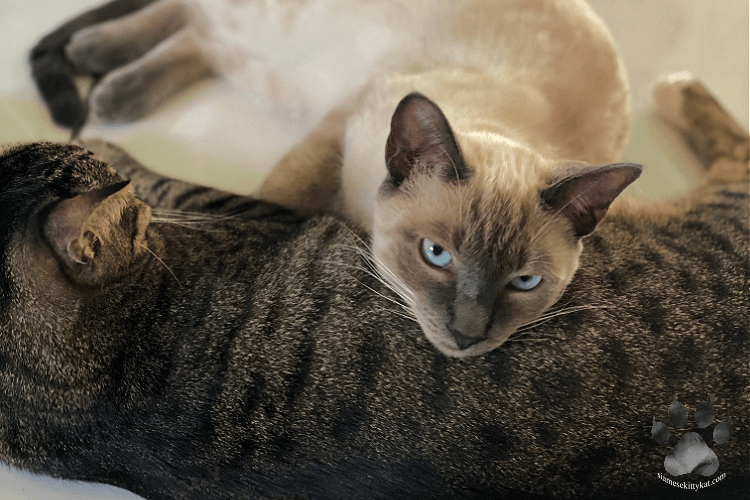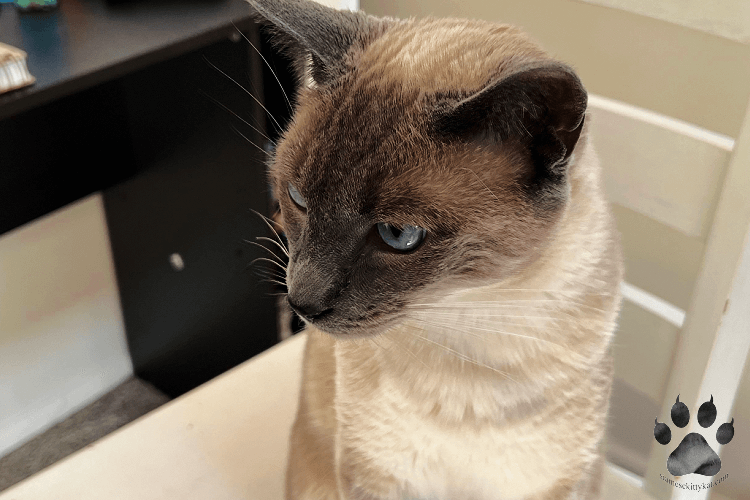Siamese cats are not going extinct. Many people care about these cats and work to ensure they are responsibly bred and raised.
However, these cats may face various challenges that could threaten their survival. People are working to protect them. We’re keeping them safe for future generations.
I sat with my two friends, Kris and Jade, for a Thursday afternoon chit-chat. Our conversation drifted from one to another. We soon found ourselves talking about Siamese cats.
Kris had recently adopted a Siamese kitten. We talked about how affectionate Siamese cats can be. Jade then brought up whether Siamese cats are going extinct. She mentioned reading an article about endangered wildcat species. Jade wondered if Siamese cats were facing a similar fate.
Jade has always been interested in wildlife conservation. I told her that Siamese cats are domestic, and many people care for them as pets. I also mentioned concerns about their declining population. This is due to irresponsible breeding practices, such as excessive inbreeding.
But I reassured her that many responsible breeders still care for Siamese cats. They’re taking steps to ensure their welfare. Kris nodded and added that many organizations focus on the well-being of Siamese cats.
What Factors Pose Risks To The Survival Of Siamese Cats?
Indoor Siamese cats, like any other cats, may encounter these potential threats:
Indoor Hazards
Siamese cats may encounter hazards at home. These can be toxic plants, electrical cords, and small objects they may ingest. These hazards can risk their health and safety if not properly managed.
Accidental Escapes
Indoor Siamese cats may accidentally escape from their home. This could expose them to potential dangers. These might be traffic accidents, encounters with wild animals, or becoming lost.
Stress and Anxiety
Indoor Siamese cats may experience stress because of confinement. They may also get anxious due to a lack of stimulation and environmental changes. This can lead to various health issues. They might face urinary tract problems, gastrointestinal issues, and skin conditions.
Indoor and Outdoor Air Pollutants
Siamese cats may be exposed to air pollutants. These can be cigarette smoke, cleaning chemicals, and dust. These can affect their respiratory health.
Inadequate Mental Stimulation
Indoor Siamese cats need mental stimulation to prevent boredom and promote well-being. They may become stressed, anxious, or exhibit destructive behaviors without enough mental stimulation.
Overdependence on Human Interaction
Siamese cats may develop an overdependence on human interaction for stimulation and companionship. This can lead to separation anxiety and other behavioral issues.
Behavioral Issues
Siamese cats may develop behavioral issues due to a lack of mental stimulation. This can lead to destructive behaviors, excessive vocalization, and aggression.
Lack of Outdoor Exposure
Siamese cats need access to the outdoor environment. Spending most of their time indoors limits their exposure to fresh air and natural light. It also limits their chances to engage in natural behaviors like exploring.
How Has Human Activity Affected The Population Of Siamese Cats?

Human activity has both negatively and positively affected the population of Siamese cats.
NEGATIVE IMPACTS:
Inbreeding and Genetic Issues
Indiscriminate breeding practices can cause inbreeding and genetic issues in Siamese cats. Breeding for exaggerated physical traits can cause genetic health issues. This can affect the cat population’s health and well-being.
Exploitation and Illegal Trade
Illegal activities, breeding in unethical conditions, and unfair trade can harm cats. They may also be used for corrupt practices like breeding without welfare considerations. This can cause suffering and mistreatment of cats and negatively impact their population.
Abandonment and Neglect
Human activity has also led to the abandonment and neglect of Siamese cats. Irresponsible ownership and neglect can add to stray or feral populations of cats. These cats may face adequate food, shelter, and vet care challenges.
POSITIVE IMPACTS:
Domestication and Responsible Breeding
Humans have made Siamese cats into pets and selectively bred them to have certain traits. This helps preserve and promote the Siamese cat breed.
Adoption and Rescue Efforts
Many cats are being abandoned or given up by their owners and end up in animal shelters. People who care about cats work hard to find these cats’ new homes and take care of them. This helps make sure they are safe and well-cared for.
Education and Awareness
People are learning more about how to care for Siamese cats properly and protect them. They are spreading information about how to be responsible cat owners and breeders. They also post online why caring for Siamese cats and keeping them healthy is essential.
Preservation through Cat Shows and Competitions
You can often see Siamese cats in cat competitions. This is a good platform where many people can see how beautiful and healthy they are. This helps raise awareness about the breed and encourages responsible breeding. This shows cat owners also how important it is to take good care of Siamese cats.
Vet Care and Medical Advancements
Vets have come up with new ways to care for Siamese cats. They help these cats stay healthy and live longer. Going to the vet can help our cats stay well and have a better quality of life.
What Conservation Efforts Protect Siamese Cats From Extinction?

1. Siamese Cat Rescue Organizations
Several Siamese cat rescue organizations rescue and rehabilitate Siamese cats in need. They provide medical care and find these cats suitable homes. Examples are Siamese Cat Rescue Center and Purebred Cat Breed Rescue. Check out this article I’ve written later. I’ve compiled a list of centers that provide care and shelter for abandoned and homeless cats.
2. Siamese Cat Adoption Programs
Many animal shelters, rescue organizations, and breeders have adoption programs for Siamese cats. These programs aim to find forever homes for Siamese cats abandoned or surrendered. They provide responsible adoption and ownership opportunities.
3. Conservation of Genetic Diversity
Breeders use responsible breeding practices to ensure cats have a diverse gene pool. This can help Siamese cats stay healthy and live longer.
4. Breed Standards and Code of Ethics
Good breeders follow standards and rules that promote responsible breeding for Siamese cats. This helps ensure that Siamese cats are properly and ethically bred and raised.
5. Education and Awareness Programs
Several programs promote awareness about caring for Siamese cats. They share information about nutrition, vaccinations, and spaying or neutering.
6. Breed-Specific Health Programs
Some organizations and breeders also have special health programs. These are health checks and genetic testing to keep the breed healthy.
Thank you for taking the time to read! Be sure to check out my other article here. I talked about how many Siamese cats you can own in the United States.
Want to immerse yourself more in the captivating world of Siamese cats? I’ve got all the information you need from their distinct color points to their fun personalities: Siamese Cats: Unique Features and Personality

